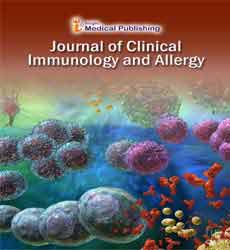Abstract
Mouse Model of Oral Acute Infection with Trypanosoma Cruzi Reveals Inflammatory Changes and Hemostatic Derangement
Oral transmission of Trypanosoma cruzi, the etiologic agent of Chagas disease, is the most important route of infection in Brazilian Amazon. Other South American countries have also reported outbreaks associated with food consumption. This route of transmission presents specific symptoms such as facial and lower limbs edema and, in some cases, bleeding and thrombosis. Nevertheless, studies that address this transmission are largely lacking regarding its pathogenesis and, more specifically, the crosstalk between immune and hemostatic systems. Methodology: BALB/c mice, aged 6±8 weeks, were infected via oral cavity (Oral infection) with 5x104 metacyclic trypomastigotes Tulahuén strain, obtained from excreta of Triatoma infestans. Animals were handled according to the rules of the Ethics Committee for Animal Research of Oswaldo Cruz Foundation. Findings: When compared with control uninfected animals, orally infected mice presented high proinflammatory cytokine (TNF-α, IFN-γ and IL-6) serum levels. The highest concentrations were obtained concomitantly to the peak of parasitemia. Blood counts revealed thrombocytopenia in the oral infected group at 14 and 21 days post-infection (dpi) and leukocytosis at 21 dpi. Tail bleeding assay displayed that animals bled more at 21 dpi. Coagulation factor concentrations varied during infection with an increase in Factor V and Factor VIII consumption at 14 dpi indicating disturbances in the coagulation cascade. Activated partial thromboplastin time (aPTT) and Prothrombin time (PT) tests corroborated the hematological changes with an increase in clotting time at 21 dpi. Moreover, preliminary data indicate amelioration of the orally infected animals after blockage of IL-6 receptor, revealing a critical role of IL-6 in the course of oral infection.
Author(s):
Dina Antunes
Abstract | PDF
Share this

Google scholar citation report
Citations : 16
Journal of Clinical Immunology and Allergy received 16 citations as per google scholar report
Abstracted/Indexed in
- Google Scholar
- Directory of Research Journal Indexing (DRJI)
- WorldCat
- Publons
- Secret Search Engine Labs
Open Access Journals
- Aquaculture & Veterinary Science
- Chemistry & Chemical Sciences
- Clinical Sciences
- Engineering
- General Science
- Genetics & Molecular Biology
- Health Care & Nursing
- Immunology & Microbiology
- Materials Science
- Mathematics & Physics
- Medical Sciences
- Neurology & Psychiatry
- Oncology & Cancer Science
- Pharmaceutical Sciences


